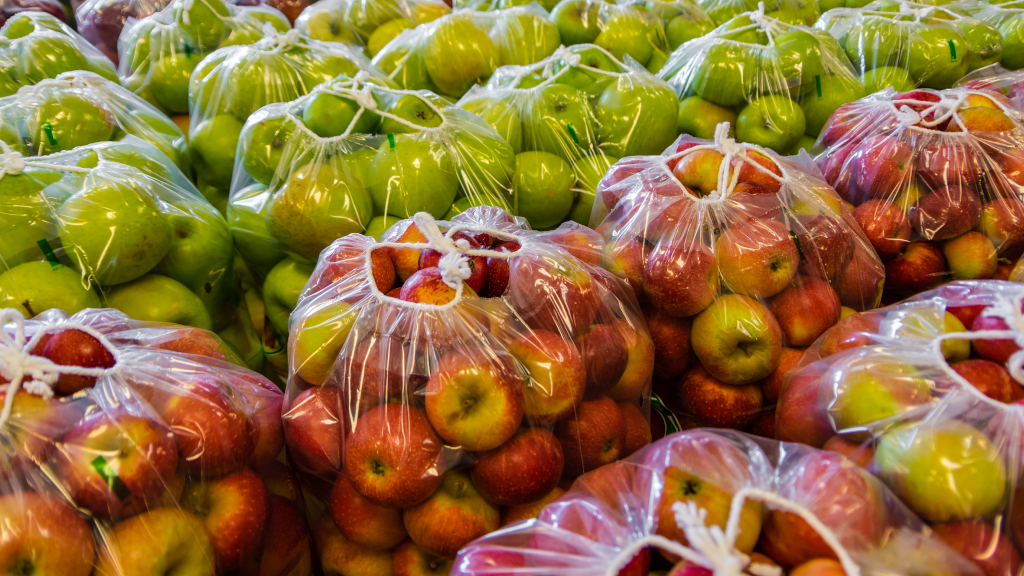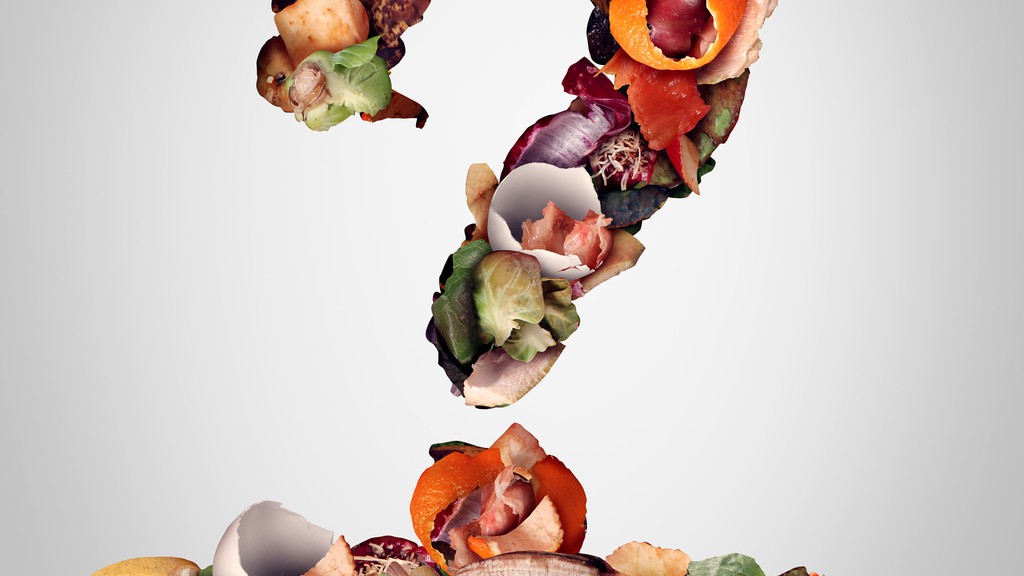Frozen foods had a profound impact on modern eating habits. People no longer had to devote large amounts of time to prepare their meals. Depending on the dish, it could just take minutes in the microwave or similar warming device.
Frozen food, whether its preserved berries or complete meals, is a multi-billion dollar industry. We go behind the scenes today, covering how food companies deal with the freezing issues of raw food products like vegetables, fruit, and meats, and how they keep them frozen until they reach the hungry consumer.
Frozen Food Market – The Issue with Water
Article Guide
Fresh fruits and vegetables, when harvested, continue to undergo chemical changes that can cause spoilage and deterioration.
Freezing food preserves them. The process slows decomposition by freezing the water in the plant cells into ice. This in turn inhibits or stalls the growth of most bacterial species.
This is not simple as it sounds. When water freezes, it expands and creates ice crystals. This causes the plant cell walls to break. The texture of thawed produce is much softer as a result. For example, when a frozen tomato is thawed, it becomes mushy and watery.
Many of the freezing processes aim to minimize ice crystal formation while still stalling bacterial growth.
Process of Freezing Food
The freezing process involves three stages:
- Pre-treatment
- Freezing
- Frozen storage
Pre-treatment
Pre-treatment in simplest terms preps the raw food products for freezing. This stage may involve processes such as blanching and cryoprotection.
Blanching stops natural decomposition which causes the loss of flavor, color, and texture. It involves the scalding of vegetables in boiling water or steam for a short time. The process is then followed by quick, thorough cooling in very cold or ice water.
Cryoprotection uses special chemicals called cryoprotectants that protect the food stuff from damage during freezing and freeze-drying.
Other forms of pre-treatment like heat treatments and dipping treatments are also performed at this stage.
Freezing
As the name implies, this is where the food stuff is frozen. Several methods are used.
Air-blast freezing
This places the food stuff into freezing rooms where the air is cold. That air is then either forced (“blasted”) onto the food or left alone to do the job of freezing the food.
This method is useful to freeze large chunks of food like meat or fish. Unfortunately, it is quite slow. It also forms large ice crystals within foods in the process.
Contact / Convection freezing
This method uses other refrigerants other than air to freeze the product. One example was developed by Clarence Birdseye, who is credited as the father of modern frozen foods. His method froze fish in cartons between two refrigerated surfaces under pressure.
Cryogenic freezing
This type of technology sprays food items with a supercooled liquefied gas like liquid nitrogen or carbon dioxide. While a large number of small ice crystals are formed, they inflict less cell wall rupture than slow freezing. This helps preserve food textures after thawing.
Innovation in frozen food – Isochoric freezing
Isochoric freezing is a new method. Unlike the methods above, which freezes food items solid at temperatures below 32 degrees F, isochoric freezing preserves them without turning it to solid ice.
It works like this. Food is stored in a sealed, rigid container—typically made of hard plastic or metal. The container is then completely filled with a liquid like water, then placed in a chamber. This in turn is gradually cooled down to a preset freezing temperature.
There are several advantages. The combination of the constant pressure within the container and the liquid protects the food items from ice crystallization. This allows for storage of fresh food products such as tomatoes, sweet cherries, and potatoes which are difficult to preserve with conventional freezing techniques. Isochoric freezing also kills microbes that may be found on the food items during processing.
Another is energy savings. Freezing food is expensive, requiring large amounts of energy to reach temperatures to freeze liquid water into ice. Isochoric freezing, on the other hand, does not need to reach those temperatures.
As Cristina Bilbao-Sainz, research food technologist at the Department of Agriculture’s Agricultural Research Service (ARS) points out: “Energy savings come from not having to freeze foods completely solid, which uses a huge amount of energy, plus there is no need to resort to energy-intensive cold storage protocols like quick freezing to avoid ice crystal formation.
“A complete change over to this new method of food freezing worldwide could cut energy use by as much as 6.5 billion kilowatt-hours each year while reducing the carbon emissions that go along with generating that power by 4.6 billion kg, the equivalent of removing roughly one million cars from roads.”
Food preservation using isochoric freezing is still in the experimental stage at the time of this writing.
Frozen storage
The “cold chain” in the food industry refers to the management of temperature of perishable products from its point of origin, the distribution chain, to finally the buyer. For frozen foods, it’s important every part of the chain maintains the necessary temperatures to preserve the items.
Frozen food manufacturers work to keep their products at the appropriate temperatures. This is usually a temperature of 0°F or below if the product is expected to be kept in storage for over six months.
Various technologies are used to maintain the cold chain. Equipment and electrical systems like industrial mini PCs for monitoring the freezing process are built with industrial parts. This helps them withstand the extreme temperature changes.
Fanless design is also useful. Since freezing only inhibits most bacterial growth, not kill it, it’s important for food manufacturing equipment to be as sterile as possible. Dust may contain particles like bacteria which could find their way to the raw food via the whirr of a computer fan. Fanless computers bring no such risk.
Finally, the refrigeration equipment found in many transport vehicles like trucks or railcars are designed to counteract any heat that may leak into the load compartment.
Rising Demand for Frozen Foods
The US frozen food production industry grew 2.1 percent per year on average between 2017 and 2022 with this year’s revenue at $40.8 billion.
There are no signs this growth will be slowing down. The frozen food market according to one study is expected to grow from $251.16 billion in 2021 to $373.77 billion by 2028. Hectic work schedules are often cited as the reason consumers are purchasing more frozen meals as they look for ways to reduce the work needed to make food.
Closing Comment
Quickly freezing raw food products like vegetables and meats to become frozen meals is an involved process. All three major steps – pre-treatment, freezing, and frozen storage – are important.
If you and your company are involved in frozen food production and are looking for the right industrial panel PCs for your manufacturing line, contact a representative from Cybernet.
Also follow Cybernet on Facebook, Twitter, and Linkedin to stay up to date on this and other relevant topics.
Stopping Food Waste at the Industrial Scale
April 30, 2019
With a soaring population and only a limited amount of space to expand for the growth of food production, providing enough food for the entire population may hinge on our ability to eliminate food waste. Even worse,…
0 Comments8 Minutes
4 Pieces of Food Waste Tech Transforming Food and Beverage Manufacturing
September 1, 2020
Production and manufacturing has been in the midst of a slow and meticulous metamorphosis the past few years. As innovations continue to push more supply chain visibility, automation, and efficiency, fat continues to be…
0 Comments10 Minutes
You Can't
Learn from a Pop-up
But we can deliver knowledge to your inbox!
We dive deep in the industry looking for new trends, technology, news, and updates. We're happy to share them with you.
Knowledge, News, and Industry Updates Right in Your Inbox




